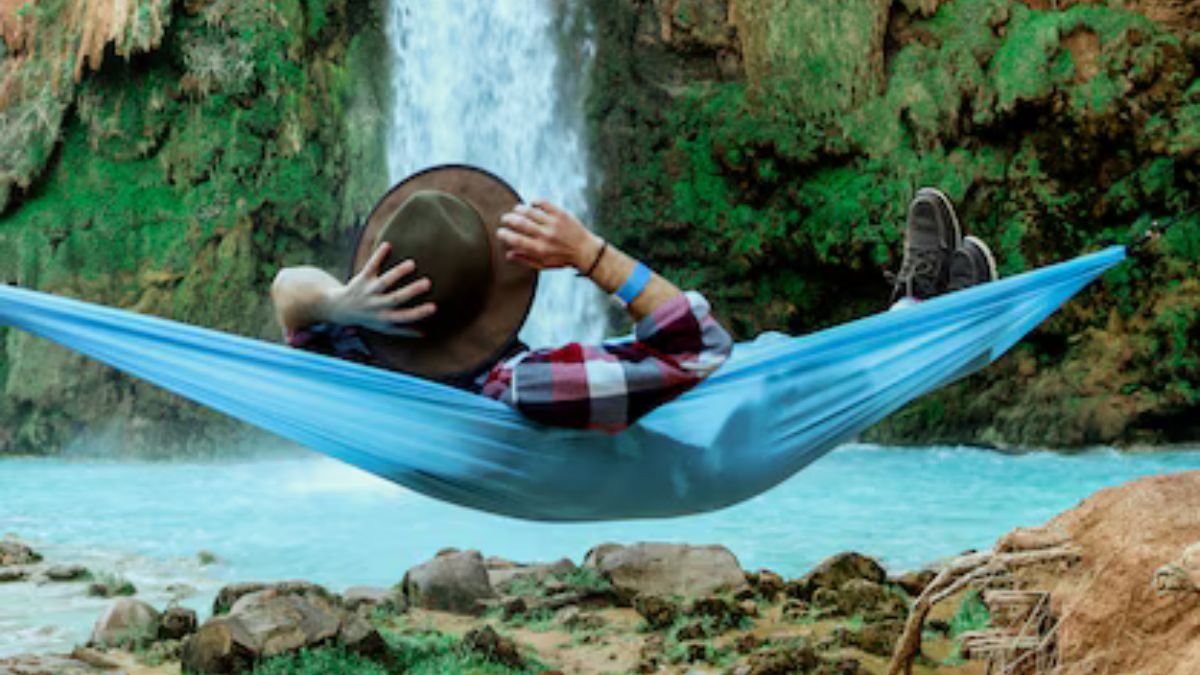Understanding Costa Rica’s Climate and Seasons
Costa Rica’s tropical climate is characterized by two main seasons: the dry season (December to April) and the rainy season (May to November). Understanding these seasons is crucial for planning your trip.
During the dry season, you can expect plenty of sunshine and less humidity, making it ideal for beach activities and exploring the national parks. On the other hand, the rainy season brings lush green landscapes and fewer tourists, offering a different kind of beauty and serenity. However, be prepared for sudden showers, especially in the afternoon.
Essential Travel Documents and Vaccinations
Before you embark on your journey, ensure that you have all necessary travel documents. A valid passport with at least six months’ validity is required. Additionally, it’s a good idea to have a copy of your passport, travel insurance details, and emergency contact information.
For vaccinations, the CDC recommends being up-to-date on routine vaccines like MMR, diphtheria-tetanus-pertussis, and influenza. Depending on your travel plans, vaccines for hepatitis A, typhoid, and malaria prophylaxis may be advised. It’s best to consult with a travel clinic or your healthcare provider several weeks before your departure.
Packing Smart for Costa Rica
Packing efficiently can make a huge difference in your travel experience. Here’s a list of essentials to help you prepare for a trip to Costa Rica:
- Lightweight Clothing: Pack breathable, quick-drying clothes suitable for the tropical climate. Include a mix of shorts, t-shirts, and long-sleeve shirts for sun protection.
- Rain Gear: A good quality rain jacket or poncho is essential, especially during the rainy season.
- Footwear: Comfortable hiking shoes for exploring national parks and sandals for the beach.
- Swimwear: Don’t forget your swimsuit for the beautiful beaches and hot springs.
- Insect Repellent: To protect against mosquitoes, especially if you plan on visiting the rainforests.
- Sunscreen and Hat: The tropical sun can be intense, so protect yourself with high-SPF sunscreen and a wide-brimmed hat.
- First Aid Kit: Basic supplies like band-aids, antiseptic, and any personal medications.
Navigating Costa Rica’s Transportation System
Costa Rica offers various transportation options, from buses and taxis to rental cars and domestic flights. Understanding the best way to get around can enhance your travel experience.
- Public Buses: Affordable and extensive, buses are a great way to travel between cities and towns. However, they can be slow and crowded.
- Taxis and Ride-Sharing: Taxis are widely available, but ensure they are official (look for the red cars with a yellow triangle). Ride-sharing apps like Uber also operate in major cities.
- Rental Cars: Renting a car provides the most flexibility, especially if you plan to explore remote areas. Be aware of road conditions and opt for a 4×4 vehicle if you plan to visit rugged terrains.
- Domestic Flights: For longer distances, consider domestic flights to save time. Airlines like Nature Air and Sansa operate flights to popular destinations.
Must-Visit Destinations in Costa Rica
Costa Rica is brimming with breathtaking destinations. Here are some must-visit spots to include in your itinerary:
- Arenal Volcano: Famous for its stunning views and hot springs. Enjoy hiking trails, zip-lining, and the La Fortuna waterfall.
- Monteverde Cloud Forest: A haven for nature enthusiasts, offering canopy tours, bird watching, and hanging bridges.
- Manuel Antonio National Park: Known for its beautiful beaches, diverse wildlife, and lush rainforests.
- Tamarindo: A vibrant beach town perfect for surfing, sunbathing, and enjoying the nightlife.
- Corcovado National Park: One of the most biologically diverse places on Earth, ideal for wildlife spotting and eco-tourism.
Understanding Costa Rican Culture and Etiquette
Costa Ricans, or “Ticos,” are known for their warm hospitality and “Pura Vida” lifestyle, which translates to “pure life” or “simple life.” Embracing this culture can enrich your travel experience.
- Greetings: A friendly “Hola” or “Buenos días” is appreciated. Handshakes are common, and a cheek kiss is a typical greeting among friends and family.
- Dining Etiquette: Meals are often a social affair. Wait for everyone to be served before starting your meal. It’s customary to say “Buen provecho” (enjoy your meal) before eating.
- Respect for Nature: Costa Rica is a leader in eco-tourism and conservation. Follow the principle of “leave no trace” and respect wildlife and natural habitats.
Adventure Activities in Costa Rica
Costa Rica is an adventurer’s paradise, offering a wide range of thrilling activities:
- Zip-Lining: Experience the thrill of soaring through the treetops in Monteverde or Arenal.
- White-Water Rafting: The Pacuare and Reventazón rivers are perfect for adrenaline-pumping rafting adventures.
- Surfing: With world-class waves, beaches like Tamarindo and Jaco are ideal for surfing.
- Scuba Diving and Snorkeling: Explore the underwater world in places like Caño Island and the Catalina Islands.
- Hiking: Discover stunning trails in national parks like Corcovado, Manuel Antonio, and Rincon de la Vieja.
Exploring Costa Rica’s Wildlife
Costa Rica’s rich biodiversity is one of its main attractions. The country is home to over 500,000 species, including:
- Sloths: Often spotted in Manuel Antonio and Tortuguero.
- Monkeys: Howler, spider, and capuchin monkeys can be seen in various national parks.
- Birds: Over 900 species, including the resplendent quetzal and scarlet macaw.
- Marine Life: Dolphins, whales, and sea turtles frequent the coasts.
- Butterflies and Frogs: Visit the Butterfly Conservatory or the Frog Pond of Monteverde to see these colorful creatures.
Costa Rican Cuisine: A Culinary Journey
Sampling the local cuisine is a highlight of any trip. Costa Rican food is flavorful, fresh, and often features ingredients like rice, beans, plantains, and fresh fruits.
- Gallo Pinto: A traditional breakfast dish made with rice and beans, often served with eggs and tortillas.
- Casado: A typical lunch plate that includes rice, beans, salad, a protein (like chicken, fish, or beef), and plantains.
- Ceviche: Fresh fish marinated in lime juice, mixed with onions, peppers, and cilantro.
- Sopa Negra: A hearty black bean soup often enjoyed with a poached egg and tortillas.
- Tropical Fruits: Enjoy the abundance of fresh fruits like mangoes, papayas, pineapples, and passion fruits.
Health and Safety Tips for Travelers
To ensure a safe and healthy trip, consider the following tips:
- Stay Hydrated: The tropical climate can be dehydrating. Drink plenty of water and carry a reusable water bottle.
- Sun Protection: Use sunscreen, wear a hat, and avoid prolonged exposure to the sun, especially during midday.
- Food and Water Safety: Stick to bottled or filtered water and eat at reputable establishments to avoid foodborne illnesses.
- Personal Safety: Costa Rica is generally safe, but exercise common travel precautions. Avoid displaying valuables and be cautious in unfamiliar areas.
- Emergency Contacts: Know the local emergency numbers and the location of the nearest embassy or consulate.
Sustainable Travel Practices
Costa Rica is a global leader in sustainability and eco-tourism. Here are some ways you can travel responsibly:
- Support Local Businesses: Choose locally-owned hotels, restaurants, and tour operators.
- Eco-Friendly Accommodations: Stay at eco-lodges and green-certified hotels.
- Respect Wildlife: Observe animals from a distance and do not feed them.
- Reduce Waste: Carry a reusable water bottle, avoid single-use plastics, and recycle where possible.
- Conserve Energy and Water: Be mindful of your usage and participate in conservation programs offered by accommodations.
Language and Communication
While Spanish is the official language, English is widely spoken in tourist areas. However, learning a few basic Spanish phrases can enhance your travel experience and interactions with locals.
- Basic Phrases:
- Hello: Hola
- Please: Por favor
- Thank you: Gracias
- Yes: Sí
- No: No
- Asking for Help:
- Can you help me?: ¿Puede ayudarme?
- Where is…?: ¿Dónde está…?
- How much does it cost?: ¿Cuánto cuesta?
Travel Insurance: Why It’s Essential
Travel insurance is a must when traveling to Costa Rica. It provides coverage for unexpected events such as medical emergencies, trip cancellations, and lost luggage. Ensure your policy covers adventure activities if you plan to engage in them.
Budgeting for Your Trip
Costa Rica can be both affordable and luxurious, depending on your travel style. Here’s a breakdown of potential costs to help you budget:
- Accommodation: Budget options like hostels start at $10 per night, while mid-range hotels range from $50-$150. Luxury resorts can cost upwards of $300 per night.
- Food: Street food and local sodas (small restaurants) are affordable, with meals costing $5-$10. Dining at mid-range restaurants may cost $15-$30 per person.
- Transportation: Public buses are inexpensive, while taxis and ride-shares vary by distance. Rental cars start at around $40 per day.
- Activities: Entrance fees to national parks are usually $10-$15. Tours and adventure activities can range from $30 to $100 or more.
Conclusion
Costa Rica is a captivating destination that offers something for every traveler. By following this comprehensive guide, you’ll be well-prepared to make the most of your trip https://notipostingt.com/2023/01/14/preparate-para-viajar-a-costa-rica.From understanding the climate and packing smart to exploring the diverse wildlife and embracing the local culture, your Costa Rican adventure awaits. Remember to travel responsibly, respect nature, and immerse yourself in the “Pura Vida” way of life. Enjoy your journey!
FAQs
Is it safe to travel to Costa Rica?
Yes, Costa Rica is considered one of the safest countries in Central America. However, it’s always wise to exercise common travel precautions and be aware of your surroundings.
What is the best time to visit Costa Rica?
The best time to visit Costa Rica is during the dry season from December to April, when the weather is most favorable for outdoor activities.
Do I need a visa to visit Costa Rica?
Citizens of many countries, including the United States, Canada, and the European Union, do not need a visa for stays of up to 90 days. Check with the Costa Rican consulate for specific requirements.
What currency is used in Costa Rica?
The official currency is the Costa Rican colón (CRC). US dollars are widely accepted in tourist areas, but it’s useful to have local currency for smaller transactions.
Can I drink tap water in Costa Rica?
Tap water is generally safe to drink in most parts of Costa Rica, but bottled or filtered water is recommended in remote areas.
What should I pack for Costa Rica?
Pack lightweight, breathable clothing, rain gear, comfortable footwear, swimwear, insect repellent, sunscreen, and a basic first aid kit.











